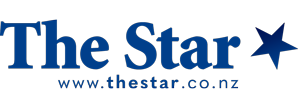
Organised by the Otago Regional Council, the event attracted about 30 local residents to Ocean Grove Domain Hall, eager to hear directly from the scientists and to discuss their concerns for the lagoon and surrounding areas.
In their presentation, University of Otago ecologist Dr Marc Schallenberg and Nelson-based Cawthron Institute lake scientist Dr Dave Kelly shared the preliminary results of a one-year project assessing the ecological health of the Tomahawk Lagoon, including ideas for rehabilitation of the wetlands.
Dr Schallenberg highlighted some of the reasons for the poor water quality, including high loads of nitrogen from the catchments, high swan populations and historically high loads of phosphorus entering the lake, which were now in the beds of the lagoons.
He also discussed options for the rehabilitation of the lagoons, including the planting of stream banks, swan control, lake level management and the use of sediment traps in the catchment.
Robust discussions with the community on these options followed the presentation, including questions about the potential impact of runoff from a new housing development, issues around sand mining and land use.
The gathering also heard a presentation from Ecotago citizen science project leader Andrew Innes, who spoke about working with local school pupils to gather water quality data over the past seven years and biodiversity data in the past two years.
This showed Tomahawk Lagoon sometimes had poor water quality compared to other New Zealand lakes, and failed some national and regional lake water quality guidelines.
"We really need to tell those stories and to work on educating our children about caring for the lagoon in the future," Mr Innes said.

"We are very keen on Marc and Dave’s work, and to look at what we can do to support it," Mr Catty said.
"We definitely want to keep up with all the things that we could focus on and achieve to improve the lagoon water quality, including riparian planting."
Otago Regional Council regional project delivery specialist Freya Moore, who organised the open day, was delighted at the strong community turnout.
"It was great to have such passionate engagement from so many different partners, groups and community members," Ms Moore said.
"One of the biggest takeaways from this session was how much support there is in the community for the Tomahawk Lagoon project.
"Another is how important the Tomahawk Lagoon Catchment Group will be for the future health of the lagoon.
"It will be exciting to see what on-the-ground actions we can take, including riparian planting," she said.
This project is part of an Otago Regional Council programme looking at rehabilitation options for the Tomohaka/Tomahawk Lagoon and Roto-nui-a-Whatu/ Lake Tuakitoto, near Balclutha.
The lake scientists undertook the fieldwork component of the ecological assessments at both lagoon systems in March, and are analysing data for a report to be presented to the regional council next month.















